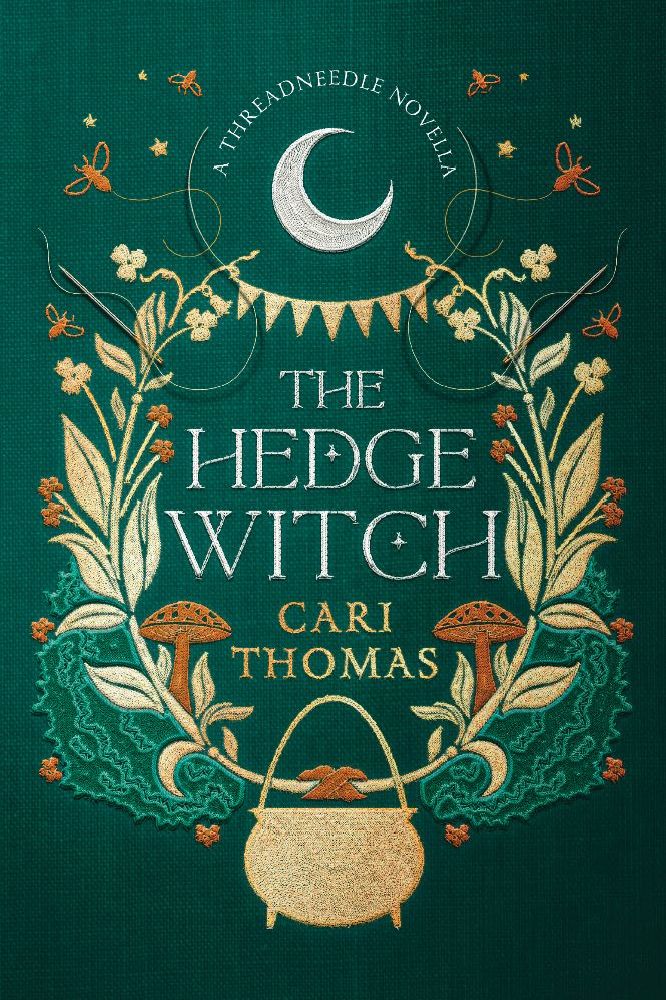The witch trials of the 17th century may seem like a long time ago, but its effect on the female gender has never entirely waned. In fact, though the Witchcraft Act was repealed in the 50s, it still feels like women are under scrutiny for being anything other than subservient and silent. In our latest interview with Cari Thomas - author of the best-selling 2021 fantasy novel Threadneedle - we’re exploring the ways in which the witch hunts are still going on today.

Cari Thomas
Back in March, First Minister of Scotland Nicola Sturgeon issued an apology for the injustice of the Scottish witch hunts and to the thousands that were killed for any kind of nonconformity. It was an important moment for womankind, because witch hunts are largely treated as an entertaining part of European history, a fun footnote, rather than as an horrific mass femicide.
“Sturgeon’s apology is an important moment of recognition. It’s a mark of respect to those whose lives were destroyed by the accusation of witchcraft,” Cari says. “Most importantly, it opens the door to reframing how we see the hunts. It provides an opportunity to confront them in all their complexity and uncomfortable brutality including the treatment, torture and sexual violence inflicted on the suspects.”
We know that freethinking women were often accused of witchcraft and executed for simply daring to speak their minds, and nowadays we see more subtle ways our patriarchal society has of keeping women in check.
“As I was growing up, it was normal for me to see women shamed for the way they looked or behaved, called out for their power, discussed, dissected and categorised with the same polarising forces that existed during the witch hunts where a woman wasn’t allowed to be complex, but either good and compliant or bad and wicked,” Cari explained.
“We’ve seen over the last few years with the #MeToo movement, with violence against women, with the resurgence of debate around abortion laws, and ongoing workplace disparities just how structural inequality still leaves women without power. And this is only talking about the Western world. There are countries where religion, tradition and the law still persecute women for speaking out, speaking up, or simply, for being women.”
With the recent conversations surrounding the overturning of abortion laws designed to protect women and their bodily autonomy, we see women yet again under the threat of the law for demanding independence and freedom. It’s a backwards step that only serves to extend female oppression into future decades.
“A woman’s agency over her own body is essential in achieving fundamental equality between the sexes. If the government can control a woman’s body for her then women lose this freedom,” says Cari. “If such a basic freedom is lost, we exist on rocky foundations, wondering what else can be taken.”
“It shouldn’t be about forcing women against their wills but making it easier for women to make decisions around abortions – free healthcare, financial support, maternity leave rights and improved childcare options. All that banning abortions will achieve is throwing us back to a time when women were driven to desperate and dangerous measures.”
One way that women are increasingly trying to claw back some freedom and control in the world is through the resurgence of witchcraft itself; a practice that tends to rise in popularity during each feminist movement.
Women and girls are searching more and more for empowering forms of spirituality that move them away from popular patriarchal religion to a more secular practice that allows them to make up their own rules. Witches of Instagram and WitchTok are responsible for setting a trend for a new aesthetic which is as much about taking control as women and as marginalised peoples as it is about casting spells.
“Witchcraft has become a form of protest. The figure of the witch – maligned, persecuted, a rebel living beyond the bounds of society – has captured the popular imagination,” Cari explains. “In some cases quite literally, with activists calling on people to Hex The Patriarchy or the hashtag #MagicalResistance that boomed after Trump came into power. Only last month Germany’s feminist march on May Day, known as Walpurgnisnacht, when witches traditionally meet, saw 2,500 people take to the streets to: ‘Take back the night.’”
She adds that for many “throwing on the cloak of the witch is a form of personal empowerment”, and that the fact that it can be so moulded to each individual encourages people to find their own power.

“In this fragmented day and age, witchcraft has cultivated communities – digital covens – bringing together not just women but other discriminated against groups,” she says.
While we know what a dangerous word “witch” was to be thrown around in historic contexts, it seems only the language, and not the act, has changed in the modern world. This is one of the reasons why women are trying to reclaim certain words that once oppressed them. “Labels,” Cari says, “still hold such power over women”.
“‘Defiant’, ‘b*tchy’, ‘bossy’, ‘bad mother’, ‘sl*t’, ‘hysterical’, ‘emotional’ and, of course, ‘witch’ itself is still railed against powerful, divisive women,” she continues. “It’s no surprise that Hilary Clinton during the election race was called a witch with images of her in a black hat, riding a broom, flooding social media. The mob no longer gather in the town square but online where women can be ostracised or 'cancelled' for expressing their views.”
Cari’s novel Threadneedle, was all about modern female suppression, particularly in the context of magic and witchcraft.
“It was that tension between the power of magic and women, and their suppression that laid down the themes I explore in Threadneedle”, she says. “My main character, Anna, is repressed both in her own home, where she’s controlled by her Aunt’s use of knot magic, and in the wider world, where old enemies are rising once more.”
Cari’s latest novella, The Hedge Witch, explores more parallels between the witches of old and the witches of today.
“Hedge witches were called such because they were women who lived on the fringes of the village, the peripheries of society – behind the hedgerows!” She says. “They were healers, cunning women, those who fostered a deep connection with nature and believed they could communicate with the living spirits within everything. For me, it’s withcraft’s deep roots within the natural world where its true power lies.”
MORE: Seven misconceptions about witchcraft by Kelly-Ann Maddox, author of Rebel Witch
Perhaps we all can take a leaf out of the Hedge Witch’s book and find our power in a world outside of a patriarchal structure that wants to claim our bodies and remove our voices. Whether we choose to be magical practitioners or not, we can all be witches.
The Hedge Witch by Cari Thomas, published by HarperVoyager, is out on 7th July 2022. Threadneedle is out in paperback now.
Tagged in Books Witch witchcraft

